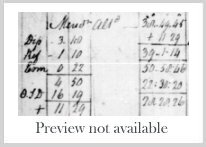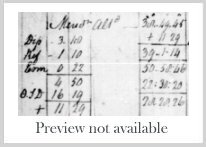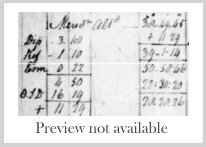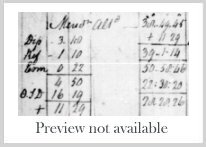
NavList:
A Community Devoted to the Preservation and Practice of Celestial Navigation and Other Methods of Traditional Wayfinding
From: Andrés Ruiz
Date: 2010 Mar 2, 12:26 +0100
Some threads have been arising in NavList about
Running Fix. I will treat to put some light in this issue.
Running Fix is defined as a position determined by
crossing LoPs obtained at different times, and advanced or retired to a common
instant of time.
First let us start with the true celestial line of
position and the generalized problem.
Let OP be the observer’s position at the time
of sight, and GP the geographical position of the celestial body at the same
instant. The dot product of the vectors defined by the centre of the Earth and
these points is the cosine of the angle between them that is the zenith
distance of the observed body. The Vector equation of the circle of equal
altitude, CoP, is [4]:
Expanding this equation, the best known form of the
equation is obtained:
·
B: Latitude N (+) / S
(–)
·
L: Longitude E (+) / W
(–)
·
GHA:
·
DEC: Declination. N (+) /
S (–).
If n observations of the altitude of celestial bodies
are made at n times, a set of n equations are obtained:
t1: Ho1 = f( Dec, GHA, B, L )
t2: Ho2 = f( Dec, GHA, B, L )
...
tn: Hon = f( Dec, GHA, B, L )
where Dec, GHA, B, L are also function of time, and
position is a function of the motion of the observer during the n observations.
In navigation, Rhumb line or GC: (B,L) = f(speed, course). In a 3D space,
altitude must be included and the motion could follow a parabolic law, for
example in military applications.
Posing the problem with similar methods as in finite
element method, (FEM, widely used in engineering, physics and chemistry), the partial
differential equations are:
Solving this using a numerical technique for finding the
solution, the fix and the parameters of the motion are obtained [1].
For Simultaneous observations, the case is the one
described in [3]
There is another method for move a CoP based in two
rotations, Metcalf [6]
This is the exact solution for a “running fix”,
but of course, it is impracticable at sea/air without the power of a computer.
Historical/manual navigation usually advance the CoP or LoP by some techniques,
some of them are approximate, because, in fact, the original circumference is
deformed in the way of the motion, and these methods assumed that the CoP
remains undeformed. Then the solution is only acceptable near the true position:
- In Marcq St. Hilaire intercept
method, the point (B,L) from which the line (p,Z) is drawn ,is translated
in the same way as with a bearing in coastal navigation.
- Adjust of the altitude [2] [5] Ho2 = Ho1 + d * cos(C-Z) = = Ho +
S*(t2-t1) * cos(C-Z)
- Adjust of Dec,GHA
[2]
The uncertainty in the knowledge of the real course
and speed, due to the wind, currents and steer, is added to the source of error
of a sextant measurement.
Regards,
Andrés Ruiz
Navigational Algorithms
https://sites.google.com/site/navigationalalgorithms/
References:
- Kaplan, G. H.
(1995): "Determining the Position and Motion of a Vessel from
Celestial Observations", Navigation, Vol. 42, No. 4, pp. 631-648.
- http://aa.usno.navy.mil/publications/docs/reports: "The Motion of the Observer in Celestial Navigation".
Kaplan, G. H. (1996), Navigator's
Newsletter, Issue 51 (Spring 1996), pp. 10-14.
PDF (113K) or PostScript (100K).
- Robert W. Severance.
Overdetermined Celestial Fix by Iteration. IoN Vol. 36, No. 4, 1989
- Vector equation of
the circle of equal altitude. Navigational Algorithms. Andrés Ruiz.
- A Treatise on
Nautical Astronomy - John Merrifield”, page 230 http://books.google.com/books?id=WUPCRcglPFkC&lpg=PP1&dq=A%20Treatise%20on%20Nautical%20Astronomy%20-%20John%20Merrifield%E2%80%9D%2C&as_brr=3&hl=es&pg=PA231#v=onepage&q=&f=false
- Metcalf, T. R.
Advancing Celestial Circles of Position, NAVIGATION, Vol. 38, No. 3, Fall
1991, pp 285-288.
- [NavList 11201] http://www.fer3.com/arc/m2.aspx?i=111201&y=200912
- [NavList 10856] http://fer3.com/arc/m2.aspx?i=110856


















